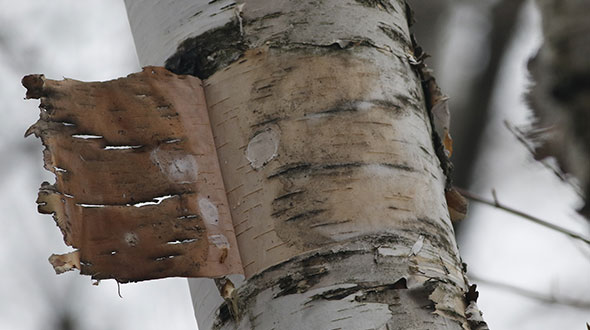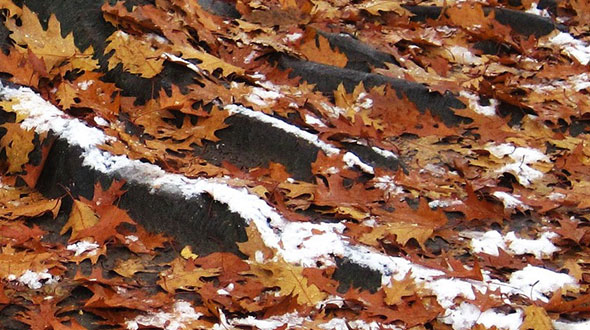
Your young trees can suffer injuries and die during winter without proper protection. With some simple protective measures, you can ensure your trees come into their growing season healthy and thriving.
toddsmariettatreeservices.com gathered information about winter tree injury, its causes, and methods you can use to treat and prevent it.
Winter Tree Injury And Protection
Winter tree injury is the damage done to trees, shrubs, and plants (evergreen and deciduous alike) during the winter months. The more severe a winter season is, the more substantial the damage can be to your trees, shrubs, and plants. The following are some of the injuries that can occur and how they can be avoided or treated:
Dried Out Evergreen Foliage – Sun, wind, and cold temperatures can cause the bleaching and drying out of evergreen foliage. The following steps can lessen the effects:
• Make sure all of your evergreen trees and shrubs are frequently watered (two times per week – one being a deep watering), right up to the time the ground begins to freeze.
• Lay a three-inch-thick layer of organic mulch over the root plate of your trees and shrubs.
• Wrap your younger trees and shrubs with burlap. Especially those exposed to southwest sun or are unsheltered from the wind.
The Weight of Snow and Ice – Even for the hardiest of trees, when storm systems drop days of sleet and snow with temperatures rising above and falling below freezing, the results can be catastrophic. Under these conditions, snow and ice accumulate on evergreen foliage and deciduous tree limbs and branches.
The weight can break branches, damage foliage, and topple a tree. This problem is tricky to handle because it is NEVER recommended to “knock off” built-up ice or snow on a tree. You could cause a severe weight imbalance, destabilizing the tree, or cause a frozen limb to snap off and come crashing down on you.

One way to combat this issue is to promote the health of your trees by:
• Practicing aggressive pruning techniques in the fall to reduce surface space
• Watering your trees frequently throughout the year and increase the frequency during times of drought
• Mulching the root plate of your trees year-round
• Having your trees inspected annually for signs of disease and insect infestation.
• Promptly treating or removing diseased or infested trees and vegetation.
When you reduce or eliminate factors that could stress your trees, you give them a better chance to survive the winter months.
Tip: Rather than risking your life to try deicing a tree, call a professional tree care service to evaluate the situation, and recommend a safe course of action.
Southwest Injury or Sunscald – Similar to how evergreen foliage is damaged in the wintertime, southwest injury occurs on young unprotected trees in the following way:
• Temperatures fall below freezing at night and freeze the outer layers of a tree’s trunk
• The trunk remains frozen or near-frozen until sunlight coming from the southwest hits it
• This light warms and thaws the exposed part of the tree trunk
• The sun sets
• The temperature falls below freezing again and refreezes the trunk

This freeze-thaw-freeze cycle ends up severely damaging the bark and inner tissues (xylem and phloem) of the tree. This damage appears as large sections of discolored, sunken, or cracked bark in the spring as the tree awakens and begins its growing season. Tree species that are highly susceptible to sunscald include:
• Birch
• Beech
• Maples
• Hickory
• Crape Myrtles
• Elms
Most trees in their youth are highly susceptible to sunscald, as they have yet to grow sufficient cork cells in their bark. Considered dead, cork cells contribute significantly to the protective qualities of a tree’s bark.
You can prevent sunscald by wrapping, painting, or covering your tree trunks in late fall or early winter. Young trees should be wrapped for the first three to four winter seasons after being planted or until they have surpassed four inches diameter at breast height.
You can find more information about southwest injury and splitting bark by reading toddsmariettatreeservices.com/tree-bark-splitting-can-i-fix-it/
Soil Heaving – Soil heaving is a severe threat to all trees, shrubs, and plants growing in your yard or landscape. More common in frigid climates, soil heaving occurs when:
• Soil freezes overnight and compresses
• Soil thaws during the day, decompressing and leaving openings in the ground
• Soil freezes and thaws over and over again, allowing more freezing air into the soil each time.
During these freezing and thawing cycles, there are two highly damaging effects taking place:
1. Freezing air is being allowed to penetrate the soil, freezing and/or killing roots
2. The expansion and contraction of the soil dislodges and “pushes up” roots.

Soil heaving can be prevented by applying a three-inch layer of organic mulch over the root plate of your trees and shrubs. The mulch will help regulate the soil temperature and moisture level.
You can find more information about mulching techniques by reading toddsmariettatreeservices.com/proper-mulching-techniques-around-trees/
Winter Drought – Winter drought occurs when little to no precipitation falls throughout the winter season. Simultaneously, soil desiccation occurs from intense sunlight, cold temperatures, and wind.
Through winter, tree roots are already working much more slowly than in other seasons. When you factor in the absence of moisture, you are left with a recipe that can kill or significantly damage the healthiest of trees.
You can fight winter drought by watering your trees and shrubs frequently throughout fall and mulching them with a three-inch layer of fresh organic mulch before winter sets in.
Tip: As long as the ground has not frozen, you can water your trees in winter.
Animal Damage – During the winter months, food becomes scarce for wildlife. Thus, some animals will resort to gnawing at the tender bark of young tree trunks, the lower limbs of trees, and in the case of deer, use their antlers to attack the trunk.

To prevent animal damage or attacks, you can erect a protective barrier around the tree, or use repellant sprays, applied to the bark, that irritate their sense of smell.
Learn more about preventing tree threats by reading toddsmariettatreeservices.com/3-tree-threat-prevention-tips/
Note: If you have volcano mulched your tree, squirrels, and other rodents may use the base of the tree as a nest, gnaw at the root flare, and potentially girdle your tree.
Winter Injury to Evergreen and Deciduous Trees
In this article, you discovered what winter tree injury is, the many ways in which it can occur, and how you can take steps to treat and prevent it.
By taking proactive measures to prevent winter injury, you are providing your trees with a better opportunity to grow and thrive during their growing seasons.
Leaving your trees exposed to the elements, you run a real risk of them developing conditions that attract disease and insect infestations that may lead to their decline and eventual death.
Sources:
extension.umn.edu/planting-and-growing-guides/protecting-trees-and-shrubs-winter
americanforests.org/magazine/article/the-language-of-bark/
tcia.org/TCIA/Blog_Items/2016/Common_Winter_Tree_Care_Issues.aspx
blogs.oregonstate.edu/treetopics/2019/01/04/drought-in-winter-what-and-ways-to-adapt-to-drier-times/
purduelandscapereport.org/article/preparations-to-prevent-southwest-injury/
Todd’s Marietta Tree Services
(678) 505-0266

No comments:
Post a Comment